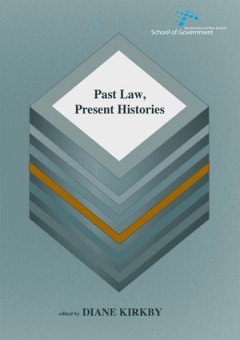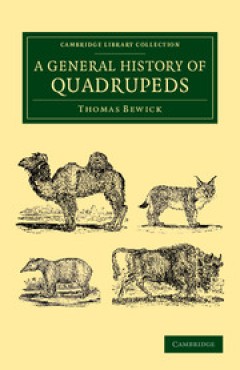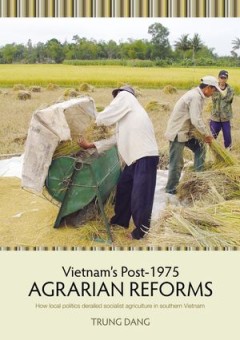Filter by

Past Law, Present Histories
This collection brings methods and questions from humanities, law and social sciences disciplines to examine different instances of lawmaking. Contributors explore the problematic of past law in present historical analysis across indigenous Australia and New Zealand, from post-Franco Spain to current international law and maritime regulation, from settler colonial humanitarian debates to effort…
- Edition
- -
- ISBN/ISSN
- 9781922144027
- Collation
- -
- Series Title
- Australia and New Zealand School of Government (ANZSOG)
- Call Number
- 340 KIR p

Coleridge's Laws : A Study of Coleridge in Malta
Samuel Taylor Coleridge is best known as a great poet and literary theorist, but for one, quite short, period of his life he held real political power—acting as Public Secretary to the British Civil Commissioner in Malta in 1805. This was a formative experience for Coleridge which he later identified as being one of the most instructive in his entire life. In this book, Barry Hough and Howard…
- Edition
- -
- ISBN/ISSN
- 9781906924140
- Collation
- -
- Series Title
- -
- Call Number
- 340 HOU c

Border Crossing : Russian Literature into Film
Each time a border is crossed there are cultural, political and social issues to be considered. Applying the metaphor of the ‘border crossing' from one temporal or spatial territory into another, this book examines the way classic Russian texts have been altered to suit new cinematic environments. In these essays, international scholars examine how political and economic circumstances �
- Edition
- -
- ISBN/ISSN
- 9781474411424
- Collation
- 272 halaman
- Series Title
- -
- Call Number
- 800 BUR b

A General History of Quadrupeds
Thomas Bewick (1753–1828) began his career as an apprentice to the engraver and businessman Ralph Beilby (1743–1817). Having entered into a partnership and illustrated more than eighty small books for children, they decided to work together on this natural history, with Beilby drafting the descriptions and Bewick providing wood engravings and textual revisions. It was first published in 179…
- Edition
- -
- ISBN/ISSN
- 9781139854702
- Collation
- -
- Series Title
- Cambridge Library Collection - Zoology
- Call Number
- -

US-China Strategic Competition Towards a New Power Equilibrium
This book examines the nature and consequences of strategic competition between the US and China, which affects the global security landscape and the emerging security architecture across the broader Asia-Pacific region. The author illustrates the evolution of Sino-US security interactions from the anti-Soviet alliance, to temporary marginalization, to eventual strategic competition and examine…
- Edition
- -
- ISBN/ISSN
- 978-3-662-46660-5
- Collation
- -
- Series Title
- -
- Call Number
- -

US Public Schools and the Politics of Queer Erasure
This book presents a history of queer erasure in the US public school system, from the 1920s up until today. By focusing on specific events as well as the context in which they occurred, Lugg presents a way forward in improving school policies for both queer youth and queer adults.
- Edition
- -
- ISBN/ISSN
- 978-1-137-53526-9
- Collation
- -
- Series Title
- -
- Call Number
- -

Vietnam’s Post-1975 Agrarian Reforms : How local politics derailed socialis…
This book investigates why collectivised farming failed in south Vietnam after 1975. Despite the strong will of the new regime to implement collectivisation, the effort was uneven, misapplied and subverted. After only 10 years of trying, the regime annulled the policy. Focusing on two case studies—Quảng Nam province in the Central Coast region and An Giang province in the Mekong Delta—and…
- Edition
- -
- ISBN/ISSN
- 9781760461959
- Collation
- -
- Series Title
- -
- Call Number
- 338 DAN v

Higher Education Reforms in Romania : Between the Bologna Process and Nationa…
Romania is an active player in various international higher education areas, while undergoing a series of higher education reforms within its national framework. The Higher Education Evidence Based Policy Making: a necessary premise for progress in Romania project was implemented by the Executive Agency for Higher Education, Research, Development and Innovation Funding (UEFISCDI) in the timefra…
- Edition
- -
- ISBN/ISSN
- 9783319080536
- Collation
- VI, 227 halaman
- Series Title
- -
- Call Number
- 370 HIG

Knowledge and Action
This volume explores interdependencies between knowledge, action, and space from different interdisciplinary perspectives. Some of the contributors discuss knowledge as a social construct based on collective action, while others look at knowledge as an individual capacity for action. The chapters contain theoretical frameworks as well as experimental outcomes. Readers will gain insight int…
- Edition
- -
- ISBN/ISSN
- 9783319445878
- Collation
- X, 300 halaman
- Series Title
- Knowledge and Space
- Call Number
- 020 KNO

Beyond Autonomy in Eighteenth-Century British and German Aesthetics
This volume re-examines traditional interpretations of the rise of modern aesthetics in eighteenth-century Britain and Germany. It provides a new account that connects aesthetic experience with morality, science, and political society. In doing so, it challenges long-standing teleological narratives that emphasize disinterestedness and the separation of aesthetics from moral, cognitive, and pol…
- Edition
- -
- ISBN/ISSN
- 9781000077247
- Collation
- 314 halaman
- Series Title
- -
- Call Number
- 700 BEY
 Computer Science, Information & General Works
Computer Science, Information & General Works  Philosophy & Psychology
Philosophy & Psychology  Religion
Religion  Social Sciences
Social Sciences  Language
Language  Pure Science
Pure Science  Applied Sciences
Applied Sciences  Art & Recreation
Art & Recreation  Literature
Literature  History & Geography
History & Geography